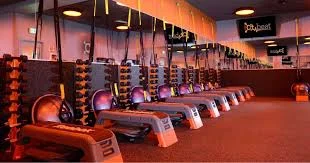Choosing the right workout can be tough, especially when options are similar but have key differences. Orangetheory Fitness is a popular choice for those who want a challenging and effective workout. However, deciding between the 2G and 3G class formats can be confusing.
- The 2G format divides participants into two groups: one on the treadmill and one alternating between rowing and strength training.
- The 3G format, on the other hand, splits participants into three groups: one on the treadmill, one on the rower, and one on the floor.
Understanding these differences is important because they can impact your workout experience and results. Whether you’re aiming to burn calories, build endurance, or increase strength, the right format can make all the difference. In this guide, we’ll dive into the details of Orangetheory’s 2G and 3G formats. We’ll explore how each one works, who it’s best for, and how to choose the one that fits your fitness goals. By the end, you’ll have a clear idea of which format is right for you. So, let’s get started on finding the perfect Orangetheory class for your needs.
1. What is Orangetheory Fitness?
Orangetheory Fitness is a popular fitness program known for its high-intensity interval training (HIIT) and heart rate-based workouts. Founded in 2010, it has quickly gained traction due to its unique approach to fitness. The program combines cardio and strength training in a group setting to deliver a comprehensive workout.
- Core Concept: The workouts are designed around the concept of heart rate zones. Participants aim to spend 12-20 minutes in the “Orange Zone,” which is 84-91% of their maximum heart rate. This approach is intended to boost metabolism and maximize calorie burn both during and after the workout.
- Class Structure: A typical Orangetheory class is divided into three sections:
- Treadmill: Running or walking intervals designed to improve cardiovascular endurance.
- Rowing: High-intensity rowing exercises focusing on full-body strength and endurance.
- Floor Exercises: Strength training using free weights, resistance bands, and bodyweight exercises.
- Benefits: Orangetheory’s focus on heart rate-based training helps ensure that each participant is working out at their optimal intensity level. This personalized approach aims to deliver effective and measurable results, making it easier for individuals to achieve their fitness goals.
2. Understanding Orangetheory 2G Format
The Orangetheory 2G format is designed for those who prefer a more focused workout experience. In this format, participants are divided into two groups, each alternating between different workout stations.
- Class Structure:
- Group One: Works on the treadmill, focusing on varying speeds and inclines.
- Group Two: Alternates between rowing and strength training exercises on the floor.
- Workout Breakdown: Each group spends a set amount of time at their respective stations before rotating. This setup ensures that participants engage in both cardio and strength training, but with a more concentrated focus on one area at a time.
- Target Audience: The 2G format is ideal for those who prefer a more structured and less crowded environment. It allows for more personalized attention from the instructor and a more controlled workout environment.
- Intensity Level: The intensity in the 2G format can be tailored to individual fitness levels, but it generally provides a more consistent and focused workout compared to the 3G format.
- Pros & Cons:
- Pros: Enhanced focus on specific exercises, less crowding.
- Cons: Limited variety compared to 3G, potentially shorter overall workout time.
3. Understanding Orangetheory 3G Format
The Orangetheory 3G format offers a different approach by dividing participants into three groups, each rotating through different workout stations. This format aims to provide a more varied workout experience.
- Class Structure:
- Group One: Focuses on treadmill exercises.
- Group Two: Uses the rowing machine.
- Group Three: Engages in strength training on the floor.
- Workout Breakdown: Each group spends a set amount of time at their assigned station before rotating. This format ensures that participants experience a well-rounded workout, covering all aspects of fitness in one session.
- Target Audience: The 3G format is suited for those who enjoy a dynamic and varied workout experience. It caters to people who appreciate a mix of cardio, rowing, and strength training in each session.
- Intensity Level: The intensity can vary depending on the station, but the 3G format typically allows for a more balanced workout across different exercise types.
- Pros & Cons:
- Pros: Greater variety, balanced workout experience.
- Cons: Less personalized attention, faster transitions between stations.
4. Key Differences Between 2G and 3G
Choosing between the 2G and 3G formats depends on several key differences that impact the workout experience.
- Group Size:
- 2G: Smaller groups, leading to more personalized instruction.
- 3G: Larger groups, providing a more dynamic environment.
- Workout Variety:
- 2G: More focused, with a clear division between cardio and strength training.
- 3G: Greater variety, with participants rotating through different types of exercises.
- Instructor Engagement:
- 2G: More opportunity for individual attention from the instructor.
- 3G: Less personalized attention due to larger groups.
- Class Dynamics:
- 2G: More controlled and structured.
- 3G: Faster-paced and varied.
- Caloric Burn: The 3G format may offer slightly higher caloric burn due to its variety and constant movement.
5. How to Choose the Right Format for You
Selecting the right Orangetheory format depends on your personal fitness goals and preferences.
- Personal Fitness Goals:
- 2G: Better for those seeking focused, structured workouts.
- 3G: Ideal for those wanting a varied, dynamic workout.
- Schedule Considerations:
- 2G: May offer more consistent scheduling.
- 3G: More flexible with varied workout types.
- Experience Level:
- 2G: Suitable for beginners or those who prefer a controlled environment.
- 3G: Good for experienced members who enjoy variety.
- Physical Limitations:
- 2G: Allows for more focused modifications.
- 3G: Provides a balanced approach but may be less accommodating for certain limitations.
- Trial Classes: Trying both formats can help determine which best fits your needs and preferences.
6. Testimonials and Case Studies
Real-life experiences can provide valuable insights into the benefits of each Orangetheory format.
- Real Stories: Members share their experiences with both 2G and 3G formats.
- Success Stories: Individuals who have achieved their fitness goals using either format.
- Instructor Insights: Quotes from instructors on the advantages and challenges of each format.
7. Maximizing Your Orangetheory Experience
To get the most out of your Orangetheory membership, consider these tips:
- Supplementary Workouts: Complement your Orangetheory classes with additional exercises.
- Nutrition Tips: Maintain a balanced diet to support your fitness goals.
- Recovery Tips: Incorporate rest and recovery into your routine.
- Using Technology: Utilize the Orangetheory app and heart rate monitor for optimal results.
8. Common Myths About Orangetheory 2G and 3G
Clearing up misconceptions about the 2G and 3G formats can help you make an informed decision.
- Myth Busting: Addressing common myths about intensity, effectiveness, and safety.
- Clarifications: Correcting misconceptions with expert opinions.
- Expert Opinions: Insights from fitness professionals on the reality of each format.
9. Frequently Asked Questions (FAQ)
Common questions about the 2G and 3G formats answered:
- Class Availability: How often are 2G and 3G classes offered?
- Switching Formats: Can you switch between formats based on your schedule?
- Customization: How to tailor each format to your needs.
- Membership Options: Which plans provide access to both formats?
- Additional Costs: Are there extra fees for either format?
10. Final Verdict: Which Format is Right for You?
Summarizing the key points to help you decide:
- Summary of Key Points: Recap the main differences and considerations.
- Personal Recommendation: Advice based on various fitness goals and preferences.
- Next Steps: Encourage trying both formats to find the best fit.
- Call to Action: Suggest scheduling a trial class or speaking to an instructor.

James Wilson combines his extensive knowledge and passion for sports to deliver top-notch content on SpoortsUp.com. His analytical approach and engaging style provide readers with a comprehensive understanding of the latest sports trends and developments. James’s articles are a perfect mix of information and entertainment.











